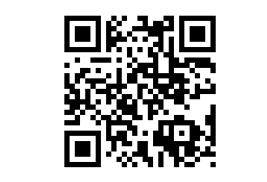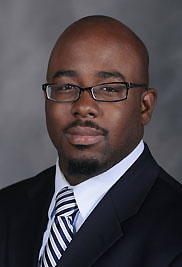eInside Briefs
News Briefs
- Cleveland Stories Project Gives Individuals the Chance to Tell Unique Cleveland Tales
- Kent State Participating in Great Colleges Survey
- Together, Excellence in Action Rolls on With Your Chance to Recognize Excellence
- Kent State Researchers Awarded Nearly $2.5 Million to Study Ways of Improving the Well-Being of Custodial Grandfamilies
- Encompass Magazine Now Available
- Student Involvement Brief: Support for Male Students Available From MEN
Cleveland Stories Project Gives Individuals the Chance to Tell Unique Cleveland Tales

Inside the Cleveland Urban Design Collaborative
The untold stories of Cleveland finally have the chance to be heard as a part of the Cleveland Stories: True until proven otherwise program sponsored by Kent State's Cleveland Urban Design Collaborative.
The program allows individuals to share lesser-known aspects of Cleveland's history in a story format. Stories range from fact to fiction and focus on past, present or future occurrences in the city.
Terry Schwarz,director of the Cleveland Urban Design Collaborative, says the program is a way for citizens to connect with their surroundings.
"This is about finding ways to make stories of the city apparent to the local community," Schwarz says. "The goal is to create a cultural and emotional connection to the city for individuals."
By the end of this initiative, the best submitted stories that depict Cleveland will be turned into artwork throughout neighborhoods and communities.
"There is a difference between what is and what was, and that is where designers intervene," Schwarz says.
Cleveland Stories consists of three events: a Story Slam, an exhibition and a book release.
The Story Slam was held on Feb. 24 at the Cleveland Institute of Art's Coventry Center. The event's organizers appealed broadly to the local community, through traditional and social media, for individuals to share their stories with the audience. Ten storytellers were selected randomly from a hat.
Story topics varied from narratives about restoring old buildings with monsters to nonhuman stories about Cleveland's "invisible" inhabitant, the coyote.
"Stories are what connect people to places," Schwarz says. "These stories are a way to bust open new ways of thinking and see if they add a few new dimensions to the city."
Those who did not have the chance to share that day still had the chance to post their stories to the program's website.
Starting April 1, individuals and storytellers will have the chance to view and listen to all submitted stories at the Cleveland Stories: True until proven otherwise exhibit. The exhibit will be held in the Cleveland Institute of Art's Reinberger Gallery throughout the month of April.
Dioramas, an artificial campfire and oral histories will also be featured in the exhibit.
So far, a total of 27 stories have been submitted. Schwarz says they are continuing to accept stories for the release of the journal on June 1. The journal will subsequently be available for purchase on Amazon.com.
"Cleveland Stories ties in best with the public," Schwarz says. "It's about creating a moment in the city and seeing how people react to that moment."
If you wish to tell your story or would like more information about Cleveland Stories: True until proven otherwise, please visit www.ClevelandStoryBook.com , stories@popupcleveland.com or use the program's online form to submit a story.
By Erin Orsini
Posted March 28, 2011 | Erin Orsiniback to top
Kent State Participating in Great Colleges Survey
Kent State University is once again participating in the Chronicle's Great Colleges to Work For Program, a study designed to recognize institutions that have built great workplaces. Part of the program involves an employee survey distributed to a sample of each institution's full-time faculty, administrators, professional staff and classified staff. This survey was designed specifically for higher education.
The survey was recently distributed randomly to university employees. If you received an e-mail invitation to take the survey, please take a few moments to complete it and provide your feedback. The results of the survey will be factored into the overall scoring process that will ultimately determine the institutions recognized.
After The Chronicle publishes the findings this summer, Kent State will receive a report that summarizes responses to the survey questions. This is an anonymous survey that assesses the employee's perceptions of certain organizational competencies and relationships that most directly impact and influence an institution's culture. Your participation and honest feedback is critical to the assessment process.
To ensure the confidentiality of your responses, the survey will be processed by ModernThink LLC, a research and consulting firm focusing on workplace excellence. Kent State will not be given any information that would enable us to trace surveydata back to any one individual.
For questions, contact Stephane Booth, associate provost, at sbooth@kent.edu.
Posted March 28, 2011back to top
Together, Excellence in Action Rolls on With Your Chance to Recognize Excellence
Do you know a colleague who has done an excellent job recently? Maybe a co-worker, a project group or an entire department? Here's your chance to give a shout-out of thanks or congratulations to that person or group and share with everyone another example of excellence in action. There's plenty to celebrate. Let's share the great things that happen here every day. We'll even post some of the shout-outs on the QR codes found on some of the posters around campus. QR is short for quick response (they can be read quickly by a cell phone). They are used to take a piece of information from a transitory media and put it in to your cell phone.

The code will lead you to a link to the e-Inside Message Boards where, through a special category, you can nominate someone you think demonstrates the excellence the campaign seeks to promote.
QR codes can be scanned by your smart phone and deliver messages on the spot, right to your phone. You may need to download a free QR code reader application, such as Red Laser, to enable your phone to read the codes.
back to top
Kent State Researchers Awarded Nearly $2.5 Million to Study Ways of Improving the Well-Being of Custodial Grandfamilies
Kent State University is participating in a nearly $2.5 million, multisite, four-year clinical trial study in which several mental health interventions will be delivered to custodial grandmothers and then compared.
The study will examine effects on the mental health of the grandmothers and the grandchildren they care for full time in complete absence of the children's birth parents. Grandparents from diverse racial, ethnic and socioeconomic backgrounds throughout Northeast Ohio will be recruited to test for cultural differences in response to the interventions.
The study's relevance is underscored by growing evidence that custodial grandchildren are at-risk for psychological difficulties due to neglect and abuse by birth parents, challenges to parenting faced by custodial grandparents and limited access to needed services.
Funded by the National Institute of Nursing Research, a division of the National Institutes of Health, the researchers anticipate that more than 500 custodial grandfamilies in four sites across the United States will participate.
Drs. Gregory Smith (Kent State University) and Bert Hayslip Jr. (University of North Texas, Denton) are the lead investigators, with the research team also including Drs. Julian Montoro-Rodriguez (California State University, San Bernardino) and Frederick Streider (University of Maryland, Baltimore). Dr. Karie Feldman (Kent State University) is project director.
For more information, contact Feldman, project director of the Custodial Grandparent Study, at 330-672-3029 or kfeldma3@kent.edu.
Information on Kent State's College of Education, Health and Human Services is available at www.kent.edu/ehhs. Posted March 28, 2011back to top
Encompass Magazine Now Available
Kent State University at Stark's spring 2011 issue of the Encompass magazine, which highlights the many accomplishments of Kent State Stark students, faculty, staff and alumni, is available upon request. Simply contact Peggy Laughlin at mlaughli@kent.edu to request a copy of the magazine. Please provide your full campus address in the email request.
Posted March 28, 2011back to top
Student Involvement Brief: Support for Male Students Available From MEN
The Center for Student Involvement occasionally provides additional information to the university community on issues of broad interest in student affairs through the Student Involvement Brief. This feature will appear in e-Inside several times a month during the regular academic year.

NJ Akbar
Since 1980, the number of women enrolled in college has been greater than the number of males. The decade between 1997 and 2007 showed an increase in the number of female students that nearly doubled the collegiate female to male ratio. While men enrolled at a 32 percent greater rate, women's enrollment increased by 63 percent. In 2009, nearly 74 percent of female high school graduates enrolled in college, but only 66 percent of male high school graduates entered college. However, now a quarter-century after women became the majority on college campuses, men are trailing women in more than just enrollment numbers.
U.S. Department of Education statistics show that men, regardless of their race or socioeconomic group, are less likely than women to complete bachelor's degrees. Among men who do complete a degree, fewer complete those degrees in four or five years. Men also earn lower grades than women. The lower grades for males may be a result of how males spend their time. As reported by the National Survey of Student Engagement, college men say that they studied less and socialized more than their female classmates. More men also say they frequently come to class unprepared. The University of California at Los Angeles' Higher Education Research Institute annual studies found that men were more likely than women to skip classes, not complete their homework and not turn assignments in on time.
To increase male enrollment and encourage better participation, schools such as Austin Peay in Tennessee have formed partnerships with male mentoring groups to encourage younger students to aim for college.
Kent State University also has many resources and groups designed to help engage men during their time at Kent State and beyond college. One of those programs is the Male Empowerment Network or MEN The program empowers males, specifically men of color, of the Kent State University community to become better individuals and members of our society by equipping them with the tools and network to do so. Members of MEN will take part in several male empowerment sessions throughout the year while becoming a part of a network of other individuals within the Kent State community who have their best interests in mind.
According to NJ Akbar, assistant director for the Office of Student Success Programs, "The overall goal Male Empowerment Network is to increase the persistence and graduation of our African-American, Latino and Native American young men at Kent State by providing a supportive male empowering environment that aims at building self-efficacy, personal development and increasing academic achievement by providing the network possible that aids in peeling away personal distractions while shining the light on intense focus on forward movement."
This is the first year of the program, which provides male students an informal outlet for conflict and advice sharing, academic support and personal growth opportunities. The program resulted from the vision of Dametraus Jaggers, a Kent State alumnus and former graduate assistant in the Department of Residence Services. Jaggers consulted with a group of about six to eight professionals at Kent State to develop the program's mission and develop the basic structure. Currently, there are 10 young men who regularly attend the meetings. Most recently, the program co-sponsored a program with women of Sister Circle, a organization composed predominately of women of color.
For more information on the Male Empowerment Network program, contact Akbar at nakbar@kent.edu .
back to top